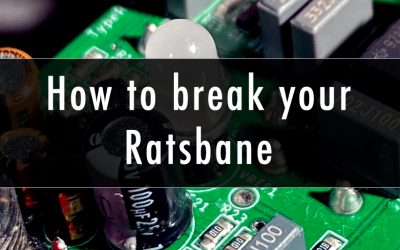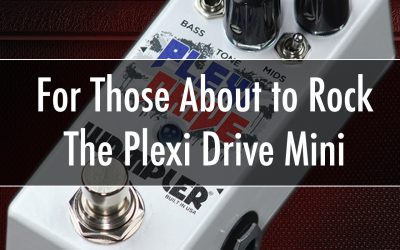What defines a “good” reverb? The recording engineer will define it one way, the concert pianist another, and the guitar player yet another. An engineer craves a myriad of options and a super-low noise floor, and these days, probably integration with their DAW of choice. A concert pianist or opera singer merely desires a realistic representation of an outstanding acoustic environment. But we guitar players are a curious lot. For many of us, the term “reverb” produces an unusual evocation; one formed by the equally unusual effect of audio passing through long metal springs. Unusual or not, the now seemingly archaic practice of producing “reverb” by sending a guitars signal happily bouncing down a long spring produces more than just a sound that emulates a large acoustic space; it produces magic.
Some accounts credit Laurens Hammond of Hammond Organ Company fame with inventing spring reverb in the 1940’s; other accounts contend that Hammond was second to Bell Laboratories, who rumor has it was experimenting with the concept as early as the mid 1930’s. Just exactly who and when doesn’t really matter; what matters is this: the distinctive sound of spring reverb is literally as old as, or even older than, the electric guitar itself. Those original Hammond reverb tanks were things of aural beauty, and they were really “tanks”; with comparatively huge springs hanging literally in tanks of oil.
It was, of course, Leo Fender who introduced the greater guitar-playing world to the magic of spring reverb, and his “tanks” were made by the Hammond Organ Company in good old Illinois, USA.
For the most part, when discerning guitar players talk in hushed tones about the hallowed golden sound of spring reverb, it’s those wonderful vintage US made tanks from the 1950’s and 60’s they hold in such high esteem. The warm-fuzzy golden goodness of vintage spring reverb is undeniable. Also undeniable is the fact that for most gigging guitarists these days, such vintage reverberation is just not particularly feasible. Not only are vintage reverb units or vintage amps that contain vintage tanks expensive, they can be unreliable. No one can blame a delicate little spring that’s been banging around under tension for decades for not being able to keep up with the rigors of the road, and so most vintage units are now enjoying the rest they so exhaustively earned, living a pampered life of luxury in a studio or honored vintage collection.
So where does that leave us? Where do we turn to get our reverb fix? For most of us this has been a difficult question. Once you have basked in the glory that is vintage spring reverb, it’s hard to accept anything less. The current production spring tanks don’t sound as good as the old ones, are still prone to damage, and can, of course, still make some really offensive noises when jostled about. For those of us who on occasion are required to travel with only a modest pedal-board the problem is particularly poignant. And so the decision is made by most guitar players: we need a reverb “pedal”.
Those of us old enough to remember the pre-digital days also remember the pre-digital “reverb” pedals, which were not really reverb at all. These things were actually the product of a bunch of short analog “bucket-brigade” delays. The sound produced was, well, interesting; but it was most decisively NOT reverb. When switched on, these things hissed like a serpent, and when switched off they sucked all the high-frequencies plumb out of your tone. To add insult to injury, these behemoth pedals also generally required a proprietary 18-volt (or higher) power supply, too.
The late 1980’s ushered in the first “digital” reverb pedals. Like their analog forerunners, these things were generally large, power-hungry beasts; they also hissed like mad and sucked tone even when switched off. The “reverb” was at least approaching the sound of true reverb, but compared to a good spring tank … well … there just plain WAS no comparison. Even the reverb pedals of the late 90’s and into the early 2000’s left much to be desired. Generally the evolution of digital pedals went the same direction as all digital “revolutions”; they just kept heaping on features. Once you convert a guitars signal into a stream of ones and zeros, it’s pretty much possible to rearrange those digits to mangle the result in any number of ways. The problem is that most folks don’t actually like the sound of rearranged ones and zeros. To a discerning guitar player this digital process can bring about grave consequences. Cheap pickups, bad tubes, inexpensive speakers; these can all provoke a pretty objectionable tone, but they don’t hold a candle to decomposing a signal into representative ones and zeros, rearranging those ones and zeros, and putting them back together. This is exactly what most digital reverb pedals do.
If the story were to end here, it would be a sad story; but it doesn’t, and it isn’t. As of this writing, at least one company, Wampler Pedals, is producing a digital reverb pedal that accomplishes everything we want a reverb pedal to do, while avoiding those things we strongly require it to not do. The Wampler “Faux Spring” reverb pedal uses a very advanced and proprietary digital spring reverb emulation circuit that is among the finest available, one which bears absolutely no resemblance to the digital reverb “chips” commonly found in reverb pedals. This complex circuit was not designed to mangle ones and zeros in a nearly infinite number of ways. This circuit is designed with one solitary goal: to provide true “spring” reverb. And, as for that terribly distasteful process of taking your guitars signal, converting it into ones and zeros and spitting it back out, this pedal avoids that digital carnage by NOT Converting the guitars dry signal at all, the non-effected (dry) signal remains pure in its analog form. The reverb may be digital, but the guitar tone most certainly is not.
Is this the final chapter? That’s hard to say. Once Leo Fender discovered the magic of the spring reverb tank, it remained the sole source of reverb at Fender throughout his years of ownership. However, if Leo was alive and at the helm of the company that bears his name today, I can’t help but feel he would be giving this “faux spring” thing some serious consideration. Likewise, if the Brian Wampler’s of today continue to tinker and innovate, it seems inevitable that the state of the reverb pedal will continue its upward trajectory. Personally, I’d like one that is super-tiny, self-powered and needs no batteries or external power source, and … oh … sounds JUST like the reverb in my vintage blackface Fender Vibrolux.



0 Comments